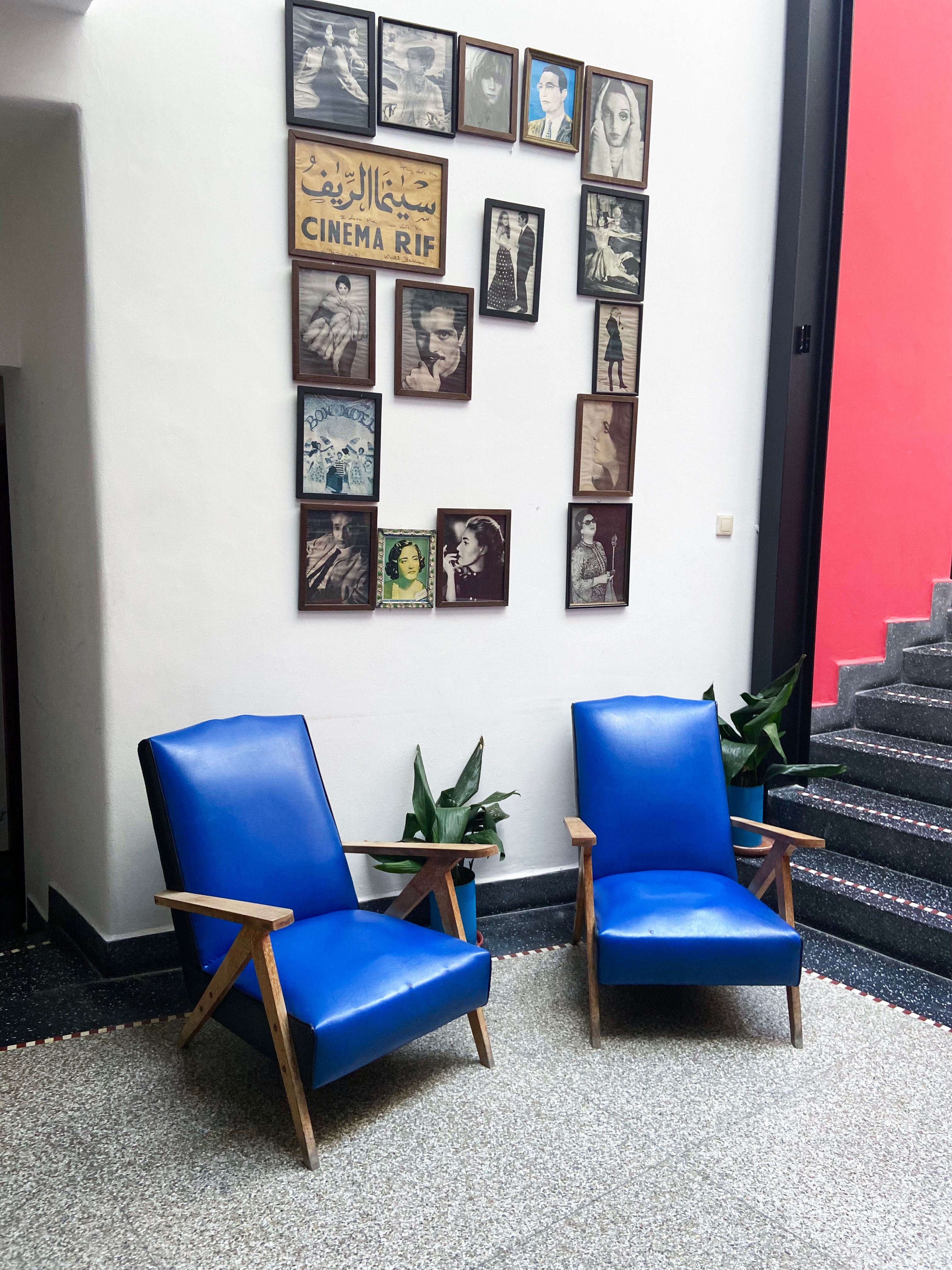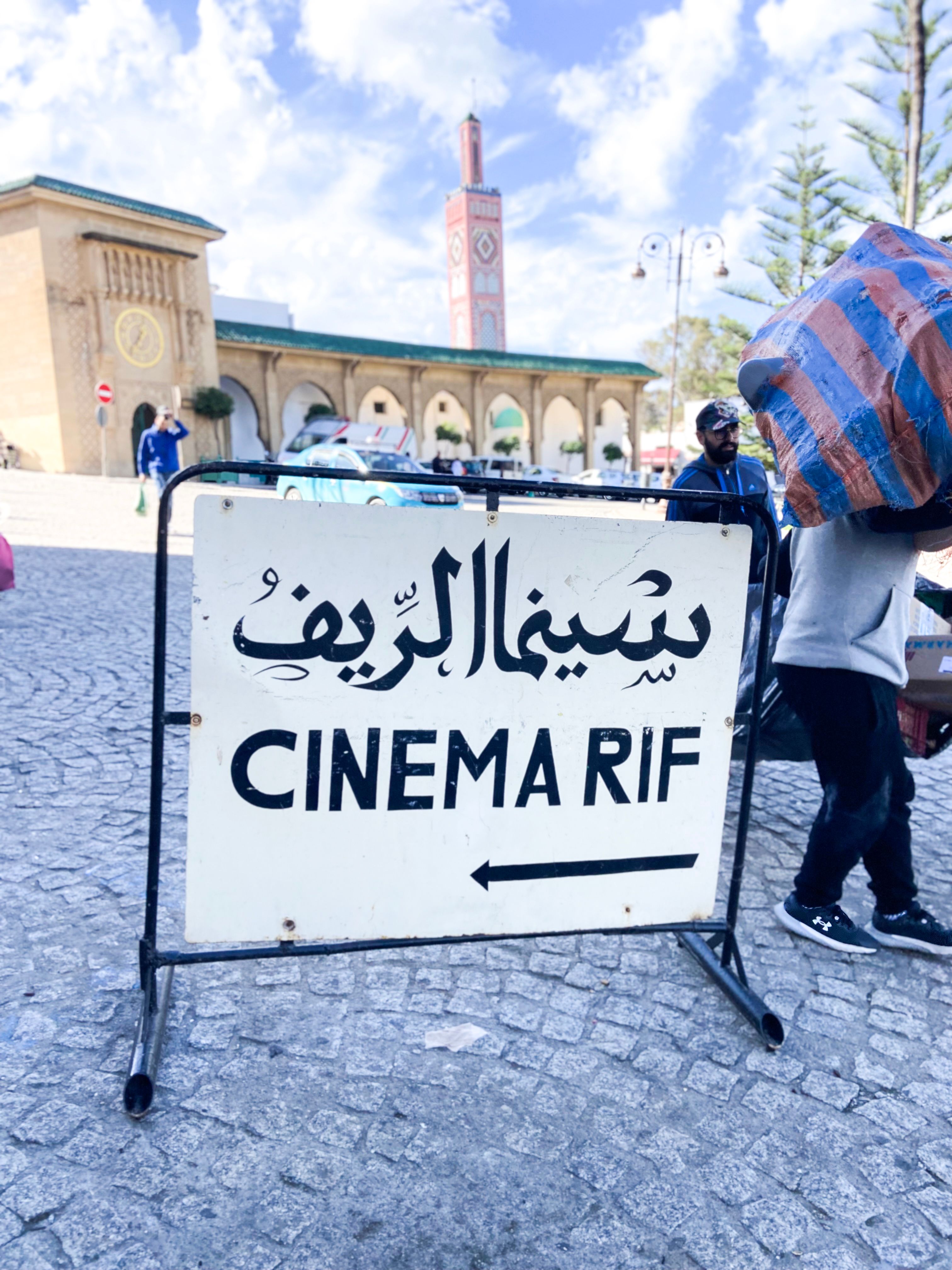Nask
Nask
Nask

Designing Bridges: A New Identity for the Cinémathèque de Tanger
Where heritage meets modernity—reshaping cultural dialogue across the Mediterranean.
A Space of Cinema, Culture, and Exchange in a Time of Fragile Cultural Bridges
Founded in 2006 by artist Yto Barrada, the Cinémathèque de Tanger has never been just a cinema. It is a space where films are not only screened for enjoyment but also serve as a tool for memory, dialogue, and transformation. In a world where cultural exchanges are increasingly vulnerable—subject to political dictates, isolationist tendencies, and shrinking public support—the Cinémathèque stands as a living act of resistance, holding space for diverse narratives and fostering artistic exchange beyond borders.
Nestled in the Art Deco Cinéma Rif, right in the heart of Tangier’s historic Casbah district, the Cinémathèque embodies the city’s layered identity—a place where past and present, local and global, cinematic heritage and contemporary creativity converge. More than just a venue, it is a meeting space where young generations, women and men, locals and foreigners, people from all social backgrounds gather to share ideas, stories, and perspectives.
—“We are much more than just a cinema: we work with schools, for example. The venue holds an incredible place in the city, overlooking Place de l’Indépendance—it has become a place of passage. The Cinémathèque is one of the most important cultural infrastructures in the city, yet it remains a small association. That’s the paradox!”
Through screenings, workshops, and international collaborations, the Cinémathèque has spent nearly two decades acting as a bridge—bringing global cinema to Tangier and amplifying Tangier’s cinematic voice on the international stage. Yet, as cultural institutions worldwide grapple with funding cuts, shifting policies, and growing restrictions on creative freedom, places like the Cinémathèque become more essential—and more fragile. In this context, strengthening the visibility and clarity of its mission is more than a design task; it is a necessity for its continued survival.
Fifteen years after its co-founder Nadja Zimmermann first collaborated on the Cinémathèque’s visual identity, Nask Studio was invited to reinvent the institution’s overall design system. At Nask Studio, we see this project as much more than a redesign. It is an opportunity to reaffirm the Cinémathèque as a cultural bridge, ensuring its identity remains strong, accessible, and adaptable in a rapidly shifting landscape.
This new identity is not about imposing a singular aesthetic but about finding a balance between Swiss design discipline and Tangier’s vernacular visual language, ensuring that both exist in harmony, side by side, on equal footing. It is about translating the mission of the Cinémathèque into a visual system that respects its history, serves its present, and anticipates its future.
More broadly, this collaboration raises a crucial question: How do we safeguard cultural spaces that are increasingly at risk? How do we ensure that Mediterranean artistic exchange—historically so rich and fluid—is not eroded by political barriers, economic instability, or indifference?
A Design Concept Rooted in Cultural Dialogue and Resilience
The new visual identity of the Cinémathèque de Tanger is the result of a process that deeply engaged with the history, function, and future of the institution. At its core, this design is a translation of the Cinémathèque’s mission into form—a system that respects the city’s vernacular heritage while remaining contemporary, accessible, and flexible enough to grow.
One of the central elements of this approach was the creation of a custom typeface for the Cinémathèque, directly inspired by the hand-painted signage of the historic Cinéma Rif. The original lettering of the cinema, crafted by local sign painters, carried an organic, human quality—one that felt deeply embedded in Tangier’s visual culture. We sought to preserve that spirit while refining it into a more structured, functional typeface that could be used across all applications.
—“I first visited Tangier in 2009. In 15 years, the city has transformed through major infrastructure and tourism growth. Yet, beneath these changes, a cultural shift—largely driven by the Cinémathèque de Tanger—has taken root. Once a cultural UFO, it has become a catalyst for inspiring a new generation of creatives under Yto Barrada’s leadership.”
Another crucial consideration was the bilingual nature of the Cinémathèque’s communication. French and Arabic have long coexisted in the public space of Tangier, but too often, one language is given precedence over the other. From the beginning, we insisted that both languages be treated with equal importance in every piece of communication—ensuring that whether printed, digital, or environmental, the Cinémathèque’s messaging remains inclusive, balanced, and legible to all audiences.
This commitment to accessibility and adaptability extended to the technical constraints of production. With the Cinémathèque recently acquiring a new risographic printer, the design system needed to be frugal, efficient, and well-suited to low-tech, high-impact printing. Risograph printing has its own set of limitations—limited colors, slightly unpredictable ink distribution, and a raw, textural finish—but these constraints became an opportunity rather than a limitation. The final design embraces this aesthetic, resulting in a visual identity that is contemporary yet low-tech-inspired, clear yet imperfect, leaving enough space for future evolution.

A Unified Identity: Merging Two Logos into One
One of the most crucial aspects of the new identity was resolving a long-standing issue: the confusion between “Cinéma Rif” and “Cinémathèque de Tanger”. For years, the co-existence of two logos—one representing the physical venue, the Cinéma Rif, and the other representing the cultural institution that operates within it, the Cinémathèque de Tanger—led to a certain ambiguity about who does what and where.
The solution was to create a single, unified identity that acknowledges both realities. Instead of forcing a separation, the new logo embraces the fact that the Cinémathèque and the Cinéma Rif are two sides of the same cultural entity. The design carefully blends elements from both historic logos into a new, cohesive mark—one that reflects the dual nature of the space while clarifying its role as both a cultural institution and a physical landmark in Tangier.
The new logo is more than just a symbol—it is a statement of clarity, accessibility, and openness. It ensures that the Cinémathèque de Tanger is instantly recognizable, whether in print, on screens, or on the facade of the Cinéma Rif itself.
A Shared Act of Resistance
For Yto Barrada, creating and sustaining cultural spaces like the Cinémathèque and The Mothership is not just about preservation—it is an act of resistance. Resistance against the erasure of histories, against the loss of independent voices, against the homogenization of culture. The Cinémathèque is a testament to this idea: it is a place that fights to exist, ensuring that cinema remains a medium of expression and a tool for cultural exchange.
—“This place is a working garden. It’s a mix, as it sits within a three-hectare forest, and at the same time, it is also a garden of resistance.”
At Nask Studio, we share this vision. We see design as a form of resistance—a way to counteract cultural fragmentation, to build bridges where others build walls, to foster collaboration where others enforce separation.
Our commitment to pan-Mediterranean and Eastern-Western creative collaborations is rooted in this belief. From Tangier to Tunis, from Marseille to Beirut, we have witnessed firsthand how creative exchange breathes new life into traditions, challenges dominant narratives, and fosters innovation. We believe that culture does not belong to one side of the Mediterranean or the other—it is a shared, fluid space that thrives on movement, interaction, and mutual influence.
—“Tangier is buzzing with new projects, design collectives, and independent fashion labels. What stands out most is the deep commitment of its young creatives to shaping the city’s cultural life. Amid challenges, their love for Tangier is unwavering—a powerful inspiration for collaboration and creation.”
Design, like cinema, is a language of connection. And in a time when cultural collaborations are increasingly vulnerable to political restrictions and financial instability, we choose to use design not just as a visual solution, but as a tool for dialogue, continuity, and resistance.
The Cinémathèque de Tanger, with its renewed visual identity, stands as an example of how history and modernity, local and global, tradition and innovation can coexist—not in conflict, but in conversation. And in that conversation, we find the essence of cultural resilience.